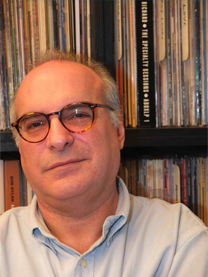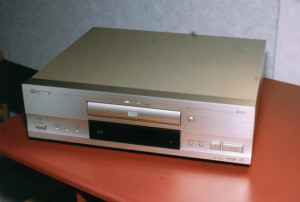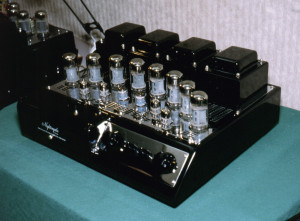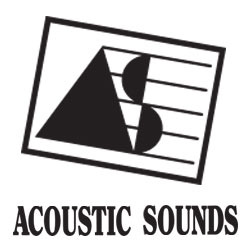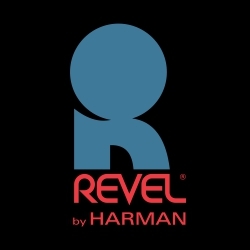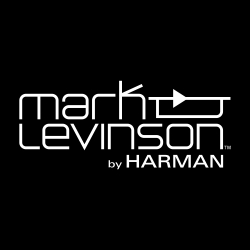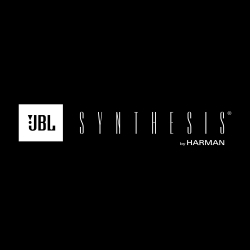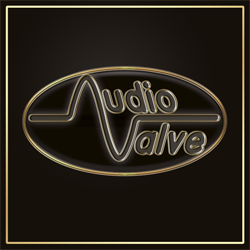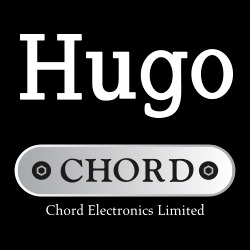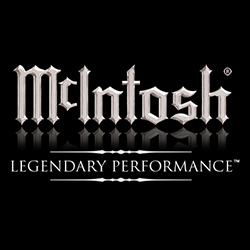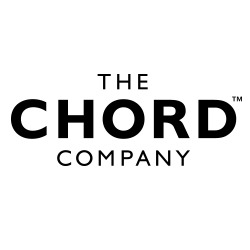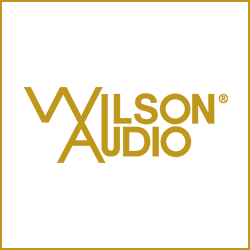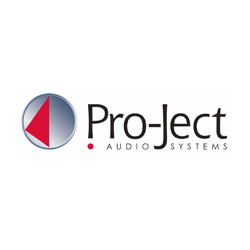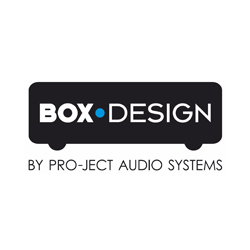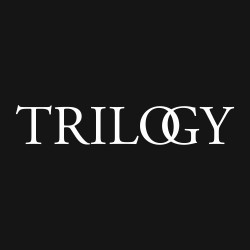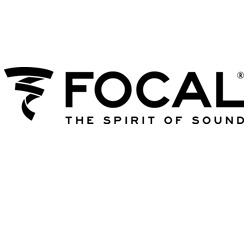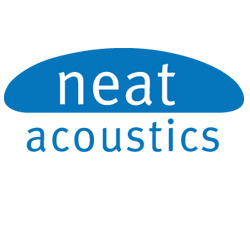Maybe nostalgia is playing too big a part in my feelings about the Hi-Fi Show in London, but there’s no escaping its contribution: this year’s was the last at Heathrow Airport, and for some of us, it marks the passing of an era. But let’s get truly objective for a minute, and deal with reality: it was this year’s biggest specialist audio/video show in Europe, and probably on the planet, if you don’t count trade-only shows like CES and those filled with “consumer” trash, like Live 98. Having been to most of ’em, I can assure you that it had more exhibitors and better attendance than that sort of hi-fi show in which the organisers list every drink in the bar in their show guides.
Highlights? Where to start…
I state quite unashamedly that I did some work for TAG McLaren Audio because I wrote the liner notes in their CD booklet, parts of their newsletters, and helped edit and proof-read their owner’s manuals, catalogues, et al. I’m broadcasting this because what I’m about to report regarding the company’s debut is purely factual, but cynics would argue that I can’t discuss it dispassionately and without bias. You decide.
It was TAG McLaren Audio’s world launch which helped to make the show such a success, and ignoring it because I wrote some copy for them would be as stupid as ignoring all transistor amp launches because I’m thought of as blatantly prejudiced in favour of tubes. (Oh, and another thing: the terms of my arrangement with the company forbid me from reviewing their equipment, so any opportunity for misbehaving has been precluded. Would that Bill Clinton had been so careful…)
Anyway, the unavoidability of the TAG McLaren Audio stand was down to its sheer size, allied to its position behind the registration desk at the Excelsior Hotel. What the company did was emulate the way companies the size of Sony and Panasonic behave at massive trade-only affairs like the Consumer Electronics Show: confidently and with style. Remember: the Hi-Fi Show at Heathrow Airport is open to the public, and its focus is solely audio and home theatre. It doesn’t attract high-roller exhibitors like computer gamers, mobile phone makers, in-car hi-fi, or portables. So, for starters, TMA rattled everybody’s cage by building a multimedia stand worthy of a major international brand…even though its initial range is purist audio.
Trading on its Formula One fame, the company placed its latest F1 car in front of the stand and attracted guests of honor like legendary driver John Watson and current F1 pilot David Coulthard. And you can imagine the tension, given that the end of the F1 season was still pending at the time. Fortunately, TMA backed up this showbizzy stand – with its in-wall monitors showing video interviews with the design team, showcases full of prototypes, separate hospitality and listening rooms, slick point-of-sale material, and a souvenir stand worthy of a rock gig – with an actual demonstration, while the stand was constantly attended by audio designers, not just salespeople. TMA’s noteworthy contribution to the show was pulling in a whole bunch of visitors who otherwise would never go near a hi-fi show. They attracted a crowd of motor-racing fans who, having the made the trip, figured, “What the heck? I’m here so I may check out the rest of this show.”
Which means much-needed new blood for the whole industry.
Meanwhile, down the hall was another momentous event: the return of Quad. After much speculation, MD Stan Curtis made good on his promises and showed the new 99 series electronics and pre-production samples of the new electrostatics. The good news is that the middle model is what we’ve all dreamed about, a Quad ESL63 updated to correct every criticism of the original. The new version, called the 988, has a truly rigid frame, revised electronics, better dynamics, and more. The great news? The price has actually …by 25 percent.
The other talk(s) of the show were 96kHz/24-bit recording, Sony/Philips’ dual-layer Super CD, and – of course – the latest DVD shenanigans. Without wishing to suggest anything about the future of Super CD or DVD itself, it looks like the 96kHz/24-bit brigade succeeded despite its origins among smaller audiophile companies. Its leading exponents, Michael Hobson of Classic Records and David and Norm Chesky of Chesky Records, flew in from the USA to support it, and they were overjoyed to see that British specialist brands had risen to the occasion by launching a bunch of affordable 96kHz.24-bit converters.
And I do mean “affordable”. Musical Fidelity’s 24k in the X Series and new models from Creek and Alchemist all come in at under £400, while one was pegged to sell for £200. Amusingly, the main worry voiced by one manufacturer was that so many pre-“mid-1998” DVDs have no 96kHz/24-bit output, so they’re expecting a bunch of complainants to lay the blame on their DACs rather than the DVD players.
SOTA reappeared with an all-new record-spinner, the Millennia Vacuum Turntable, a break from the classic SOTAs of yore and reminiscent of current VPIs. What’s so unusual about SOTA launching a new product in the UK rather than the USA is that the company had a negligible presence here in its previous guise. One could suppose that this is a measure of the esteem in which the show is held. But so, too, did other US brands present world launches here rather than in the USA, with Revel unveiling new speakers – including a floorstander – and Mark Levinson showing a DVD player, Chesky turned up with consumer-ready versions of four 96kHz/24-bit DVD titles, and Canada’s Totem brought along the Forest floorstanding speaker. Then again, there were Italian, French, Japanese, and German launches as well.
But it was, first and foremost, a British show, and home-grown Arcam stole the show for many with that least coveted of sources: radio. The company enjoyed mainstream press coverage in all manner of media because it unveiled the world’s first-ever, commercially-available, all-digital tuner, the Alpha 10. I’ve never given a damn about radio, at least not since I left the USA where variety makes it worthwhile, but I have to admit that the demo was convincing. I loved the digital read-out which provides exactly the information most DJs forget to deliver. The sound was described as “near CD quality”, but I can’t wait to try it side by side with a conventional FM feed.
Too bad I’ll have to do it in another part of the country…
But just how important is the show in global terms? Enough to attract the presence of non-UK-based audio legends/heroes/celebs like Marantz’s Ken Ishiwata, the Brothers Chesky (sounds like a soul act), Krell’s Dan D’Agostino, Neil Sinclair from Theta, cable mavens Karen Sumner (Transparent), Steve Hill (Straight Wire), Bill Lowe (AudioQuest) and Ray Kimber (you gotta ask?), Classic Records’ 96kHz/24bit guru, Michael Hobson, and no less than three staffers. As for home-grown audio stars, well, let’s just say that any brand not in attendance simply doesn’t matter. So, if you wanted to rub shoulders with Julian Vereker, Tim De Paravicini, Stan Curtis, Martin Colloms, Russ Andrews, Paul Miller, John Dawson, et al, it was the show to visit.
If this seems unnecessarily boastful, it’s only because – for 16 years – the Hi-Fi Show has refused to blow its own trumpet. The English Disease is to take everything for granted, to refuse that something local can compete in world terms. Here’s some more of what appeared:
PIONEER showed, alongside some truly nifty micro-systems with neat touches like pop-up control panels, a new Region 2 DVD player called the DV-717. Now I’m still furious with the whole shambles that is the Euro DVD presence, despite loving it for its intrinsic worth, and I am loath to recommend that anyone even consider its purchase until the Region 2 catalogue numbers at least 2000 titles. But if you just can’t wait, this latest addition to the Pioneer DVD family improves on the existing models by adding capability for the finalised, fully-approved version of DTS on DVD. Let’s just hope that the rumours of DTS not being available on Region 2 DVDs is based on paranoia rather than fact…
With 96kHz/24-bit seeming to have a greater future than its detractors would care to acknowledge, it was heart-warming to note that British manufacturers were quick to issue affordable DACs to connect to the DVD players which deliver the correct data stream. In the haste and confusion that is a hi-fi show, I may have muddled ’em up, but I’m certain that there were three sub-£400 devices including Musical Fidelity’s X-24K (for certain), another from Creek (I think) and a teensy one from Alchemist…or was it Myriad. Whatever, those of you with DVD players like the Pioneers will be able to access the new generation of music-only, 96kHz/24-bit DVDs, four of which appeared for the first-time ever on the Chesky stand. And these DACs will make life easier for all who own a mix of digital sources, the X-24K, for example, dealing with 32, 44.1, 48, 88.2 and 96kHz signals. If any technology marked the 1998 event, this was it. Too bad it wasn’t 98kHz for added symmetry.
NAIM, like Linn last year, argued that there’s life yet in conventional CD by launching a new version high-end player, the CDSII. Available for £3700 on its own or for £5625 with the XPS external power supply, this player features a VAM 1205 transport, which is the latest version of the Philips CDM12. Naim fits a novel leaf spring suspension, plus a second suspension to isolate the main circuitry, the CDSII offers HDCD decoding, and its processing is through a pair of Burr-Brown PCM1702K 20-bit mono DACs. Naturally, attention has been paid to jitter reduction (I like to think that our own Paul Miller has forced all manufacturers to lose much sleep over this aspect of CD playback), and the CDSII sports a herd of regulated power supplies. As is Naim philosophy, there’s an upgrade path to the CDSII, starting with the purchase of a CDX.
Another company not yet willing to abandon CD is BOW TECHNOLOGIES, which launched a CD player to match the Wazoo integrated amp. The Wizz (have these guys been talking to Dave Wilson?) is a top-loader like the Bow ZZ-Eight, effectively a scaled-down version of that design. Its transport mechanism is a Philips CDM12, the styling is as distinctive as that of the Wazoo, and the price should be around the £3000 mark. Alas, it was too new for any spec to be available, but it should prove to be something special, given its DNA chain. (Later, in Milan, I learned that the Wizz will probably be called the Wizzard.)
NIGHTINGALE, which had its UK debut at the Hi-Fi Show, also arrived two weeks later in Milan with a new, more cost-effective mains conditioner. The CS1500 provides isolation, filtering and mains control for a system requiring up to 1500VA capability. As with other Nightingale conditioners, the unit features a front-panel display informing you of the total system status. (Note that I will be examining one of these in a few months when my listening room, is finished; watch this space.) Also in the room was one of my favourite valve amps, the ADM-30 integrated which I believe I once likened to a Harley-Davidson. For those who don’t agree with my love for robin’s eggshell blue metallic, the company gave us the first glimpse of a new type of gloss black and a wild violet and navy blue mottled finish.
Someone will correct me if I’m wrong, but I believe that we also hosted the first-ever public viewing of B&W’s spectacular Nautilus 800 series, a range derived directly from the startling if rather absurd Nautilus. The technology has now been adapted to enclosures less, uh, overwhelming than the familiar gloss-painted mollusc, with every model enjoying such developments as Isopath gel vibration isolators, Kevlar cones and Matrix cabinetry, each featuring a Nautilus tweeter mounted in a special, separate enclosure – even on the bookshelf/stand-mounted models and the centre-channel designs.
ALEMA showed a new type of amplifier which had more than a few heads scratching, especially given the company’s valve maven status. Dubbed ‘The World’s First Trans-Impedance Amplifier’, the A.M.P. (Advanced Magnetic Power) is a 50W balanced or single-ended power amp said to deliver the best sound characteristics of triodes and transistors. It uses ‘proprietary flux convertor coupling’ (sic) and no loop feedback whatsoever, has 0/4/8 ohm speaker taps, a full remote control option and a price per pair of £2495.
One new brand which everyone wanted to talk about was France’s LAVARDIN Technologies, which designs and manufactures “high end audio amplifiers using exclusive and revolutionary design concepts which radically reduce the “Memory distortion” of components.” Memory distortion is said to demonstrate the reasons why a good valve amplifier can beat its solid state counterpart “because tube technology allows electrons to travel through a vacuum causing no storage or memory effect, but solid-state amplifiers use silicon components which keep traces of the electron flux that has gone through. New electron flux is affected by the fact that other electrons have preceded it. With the memory effect of solid state circuits reduced, all the improvements that transistor technology give like unlimited power, accuracy, very low harmonic distortion and extended and linear frequency response can be added to the most alive and silky musical rendition of the best single-ended monotriode designs.”
Lavardin’s range starts with the “S” Series, featuring the Model IS integrated line stage amplifier (£1595), the Model AS integrated line stage amplifier (£1245), the Model MAS mono power amplifier for LS3/5As (!) (£1245) and the Model PS line pre amplifier (£1395). The “Reference Series” consists of the Model IT integrated line stage amplifier (£3200), the Model AP power amplifier (£3495), the Model PE line preamplifier, the Model MI microphone pre amplifier and the Model PO phono pre amplifier, with prices to be announced.
TUBE TECHNOLOGY announced its flagship digital replay system. The Fulcrum 192 DAC accepts all dual-channel formats up to 192kHz/24-bit, and uses an HDCD digital filter for all formats below 50 kHz, with bespoke Field Programmable Gate Arrays filter for 96/192kHz operation. Digital to analogue conversion is also based on FPGA technology, “for better jitter sensitivity than Bitstream and a tenfold improvement over Multibit DACs.” The DAC feeds a high linearity Class A tube output stage, which uses six low-noise 6922 triodes per channel. The input receiver, phase locked loop, clocks, DAC arrays and tube stages all have dual-mono, independently-regulated power supplies. The Fulcrum CD Drive is supplied at 44.1 kHz, but is upgradable to ensure computability with future formats. When used with the Fulcrum 192 DAC, the CD Drive’s master clock is generated in the DAC and fed through a separate clock output, thus eliminating jitter. Price for the DAC will be £1750, while the drive sells for £850.
My favourite anecdote of the show? Sony had a problem on its trade day when the US-made, highly-esteemed, mega-bucks pre-amp it had chosen for its 96kHz demos failed disastrously. (Naturally, I’m too much of a gentleman to identify the actual pre-amp.) No matter what Sony or the pre-amp’s importer tried, they couldn’t get it to work. So who came along to save the day, an audio knight in shining armour? None other than Anthony Michaelson of Musical Fidelity, who loaned Sony a Nu-Vista for use throughout the show.
Did someone say largesse was dead?
Given the proximity, in time and space, of the Hi-Fi Show at Heathrow and TOP Audio in Milan, it should come as no surprise that the stars of both were the same. Just as the British were awed by the first showing of Sonus Faber’s heroic Amati Homage, so were you two weeks later. The Guarneri’s follow-up, unveiled in London the main Italian show, looks like a Guarneri that grew downwards. As gorgeous as its predecessor, this beauty arrived finished in some luscious, tomato-y red wood and it sounded, with Audio Research electronics, like angels singing. If the UK price is around £10,000. Also seen at both shows were Theta’s DaViD, the Linn CD12, Audio Analogue’s long-awaited CD player, the Musical Fidelity X-Ray – it was almost like we witnessed a High End Road Show. Amusingly, the weeks following TOP Audio meant shows in Brazil, Spain, Poland, Hungary, Greece, etc, so canny reporters might just as well have sent the same report again and again with local variations.
(Hi-Fi Review, 1998)
